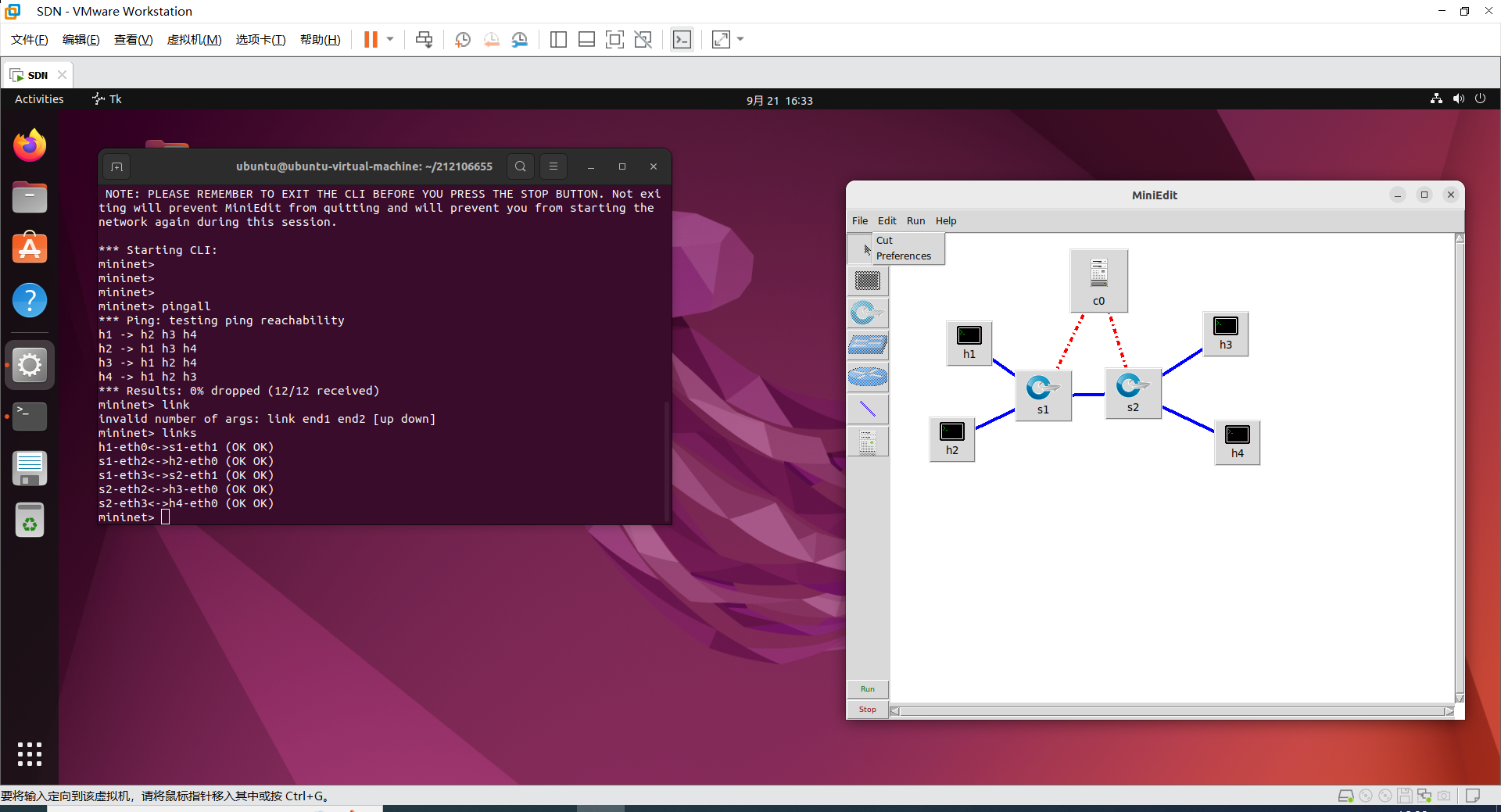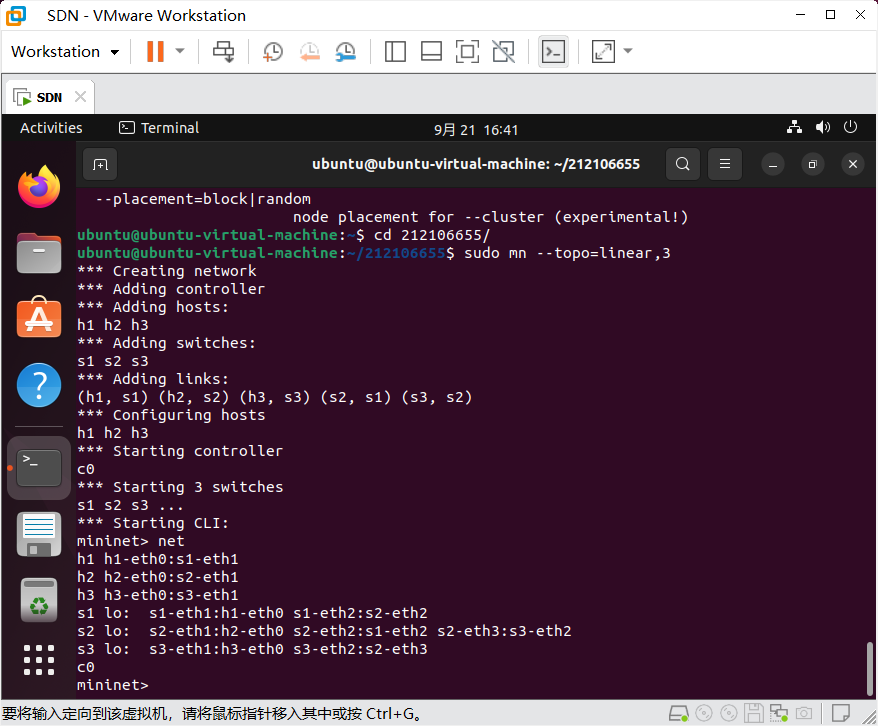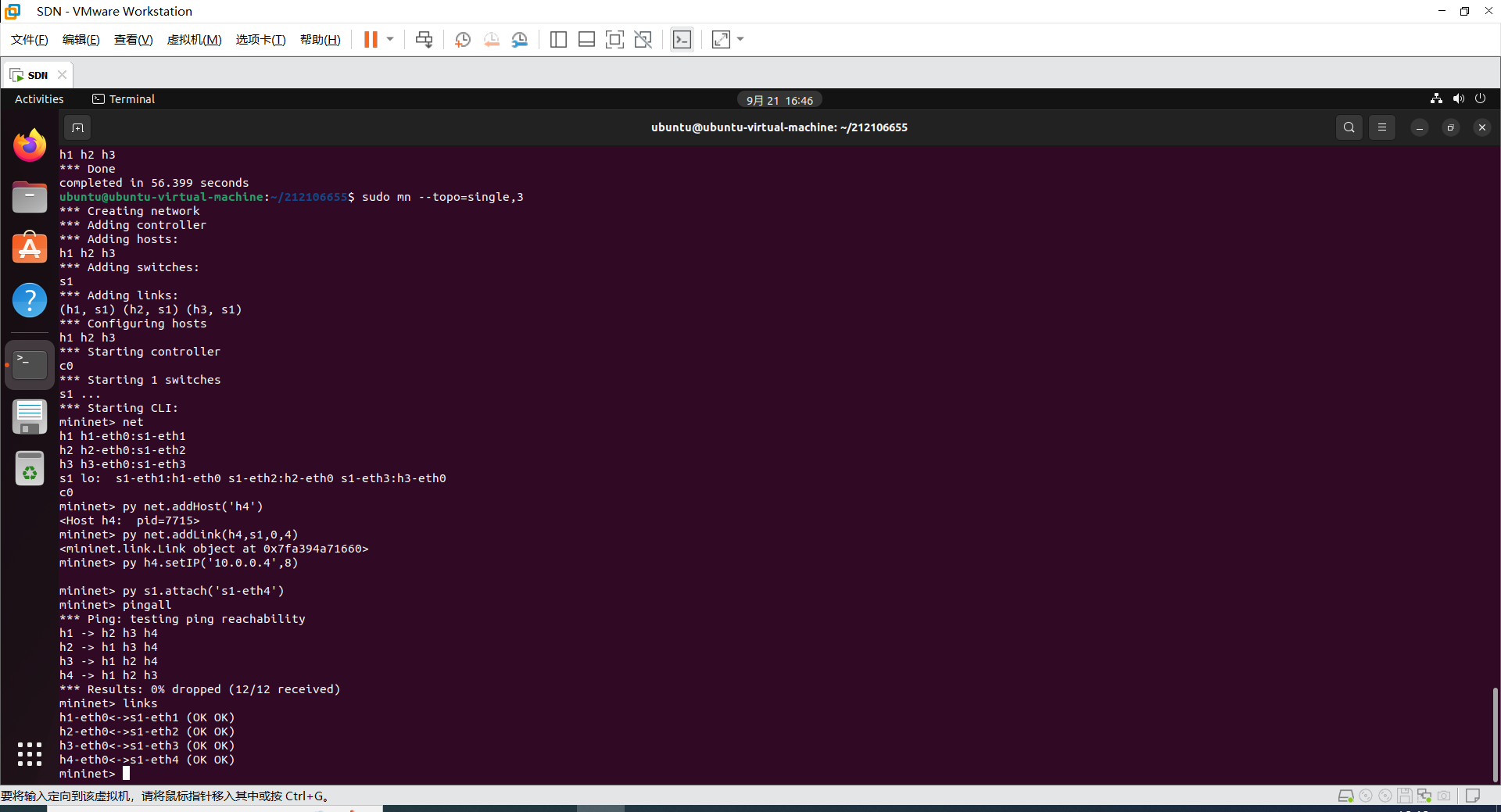实验1:SDN拓扑实践
实验1:SDN拓扑实践
一、实验目的
1.能够使用源码安装Mininet;
2.能够使用Mininet的可视化工具生成拓扑;
3.能够使用Mininet的命令行生成特定拓扑;
4.能够使用Mininet交互界面管理SDN拓扑;
5.能够使用Python脚本构建SDN拓扑。
二、实验环境
Ubuntu 20.04 Desktop amd64
三、实验要求
(一)基本要求
-
使用Mininet可视化工具,生成下图所示的拓扑,并保存拓扑文件名为学号.py。

-
使用Mininet的命令行生成如下拓扑:
a) 3台交换机,每个交换机连接1台主机,3台交换机连接成一条线。
b) 3台主机,每个主机都连接到同1台交换机上。
-
在2 b)的基础上,在Mininet交互界面上新增1台主机并且连接到交换机上,再测试新拓扑的连通性。

-
编辑基本要求第1步保存的Python脚本,添加如下网络性能限制,生成拓扑:
a) h1的cpu最高不超过50%;h1 = net.addHost('h1', cls=Host, ip='10.0.0.1', defaultRoute=None, cpu=0.5)
b) h1和s1之间的链路带宽为10,延迟为5ms,最大队列大小为1000,损耗率50。net.addLink(h1, s1, bw=10, delay='5ms', max_queue_size=1000, loss=50)
(二)进阶要求
编写Python脚本,生成如下数据中心网络拓扑,要求:
- 编写.py拓扑文件,命名为“学号_fattree.py”;
#!/usr/bin/python #创建网络拓扑 """Custom topology example Adding the 'topos' dict with a key/value pair to generate our newly defined topology enables one to pass in '--topo=mytopo' from the command line. """ from mininet.topo import Topo from mininet.net import Mininet from mininet.node import RemoteController,CPULimitedHost from mininet.link import TCLink from mininet.util import dumpNodeConnections class MyTopo( Topo ): "Simple topology example." def __init__( self ): "Create custom topo." # Initialize topology Topo.__init__( self ) L1 = 2 L2 = L1 * 2 L3 = L2 * 2 a = [] b = [] c = [] # add core ovs for i in range( L1 ): sw = self.addSwitch( 'a{}'.format( i + 1 ) ) a.append( sw ) # add aggregation ovs for i in range( L2 ): sw = self.addSwitch( 'b{}'.format( L1 + i + 1 ) ) b.append( sw ) # add edge ovs for i in range( L3 ): sw = self.addSwitch( 'c{}'.format( L1 + L2 + i + 1 ) ) c.append( sw ) # add links between core and aggregation ovs for i in range( L1 ): sw1 = a[i] for sw2 in b[int(i/2)::int(L1/2)]: # self.addLink(sw2, sw1, bw=10, delay='5ms', loss=10, max_queue_size=1000, use_htb=True) self.addLink( sw2, sw1 ) # add links between aggregation and edge ovs for i in range( L2 ): for sw1 in b[i:i+2]: for sw2 in c[i*2:(i+2)*2]: self.addLink( sw2, sw1 ) #add hosts and its links with edge ovs count = 1 for sw1 in c: for i in range(2): host = self.addHost( 'h{}'.format( count ) ) self.addLink( sw1, host ) count += 1 topos = { 'mytopo': ( lambda: MyTopo() ) }
- 必须通过Mininet的custom参数载入上述文件,不得直接使用miniedit.py生成的.py文件;
- 设备名称必须和下图一致;
- 使用Python的循环功能实现,不得在代码中手工直接添加设备和链路。

